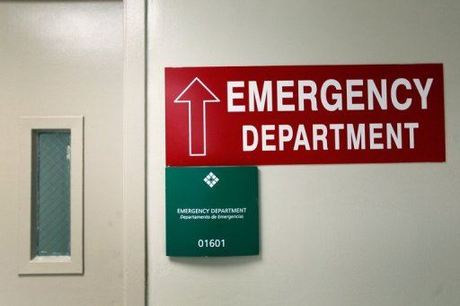Gene Sleuths Track Spread of Hospital Superbug

Gene detectives on Sunday said they had pinpointed how a hospital superbug arose in North America in the early 2000s and spread to Europe before becoming a source of global concern.
The germ spread through two different but closely-related strains, not one as previously thought, said the researchers.
The evidence comes from a "family tree" of the dangerous bacterium Clostridium difficile as it evolved into different strains over the years, they said.
"Between 2002 and 2006, we saw highly publicized outbreaks of C. difficile in hospitals across the UK, U.S., Canada and Europe," said Miao He of Britain's Wellcome Sanger Institute.
"We found that this outbreak came from two separate epidemic strains, or lineages, of C. difficile, FQR1 and FQR2, both emerging from North America over a very short period and rapidly spread between hospitals around the world."
The study, published in the journal Nature Genetics, analysed the DNA from C. difficile samples taken from hospitals around the world from 1985 to 2010.
Two strains of the bug separately acquired genes that made them immune to fluoroquinolone, once the frontline antibiotic against it, the authors found.
"Up until the early 2000s, fluoroquinolone was an effective treatment for C. difficile infection," said investigator Brendan Wren, a professor at the London School of Hygiene and Tropical Medicine.
"We've seen that since these strains acquired resistance to this frontline antibiotic, not only is it now virtually useless against this organism, but resistance seems to have been a major factor in the continued evolution and persistence of these strains."
The new study, appearing in the journal Nature Genetics, sheds worrying light on how superbugs can travel easily and swiftly via jet travel and interconnected health systems.
The first known outbreak of the FQR1 strain was in Pittsburgh, Pennsylvania, in 2001. It then leapt from the northeastern United States to South Korea and Switzerland.
The earliest outbreak of the FQR2 strain appears to be in Montreal in 2003, but its transmission pathway was different.
The germ disseminated in North America before being introduced into Australia in a single incident, and to continental Europe and Britain, both on at least four incidents.
Known as "C-diff," the pathogen ranks alongside Methicillin-resistant Staphylococcus aureus (MRSA) as a hospital threat.
It causes about half a million cases of sickness, and between 15,000 and 20,000 deaths, in the United States each year, according to estimates published in 2009.
The bug comprises a bacterium that comes in a spore, or a hardy shell-like jacket, which makes it easily transportable on surfaces or hands.
It naturally colonizes the gut and is not a problem for people who are healthy as it is kept in check by other intestinal bacteria.
But when antibiotics are used to treat someone who is sick, the drugs can wipe out the "good" bacteria, which leaves C. difficile to multiply uncontrolled.
As it reproduces, it releases toxins that cause severe, even fatal, diarrhoea as well as colitis that may need removal of the colon.
Resistance to fluoroquinolone means that doctors have to fall back on a diminishing arsenal of antibiotics to kill the germ.



